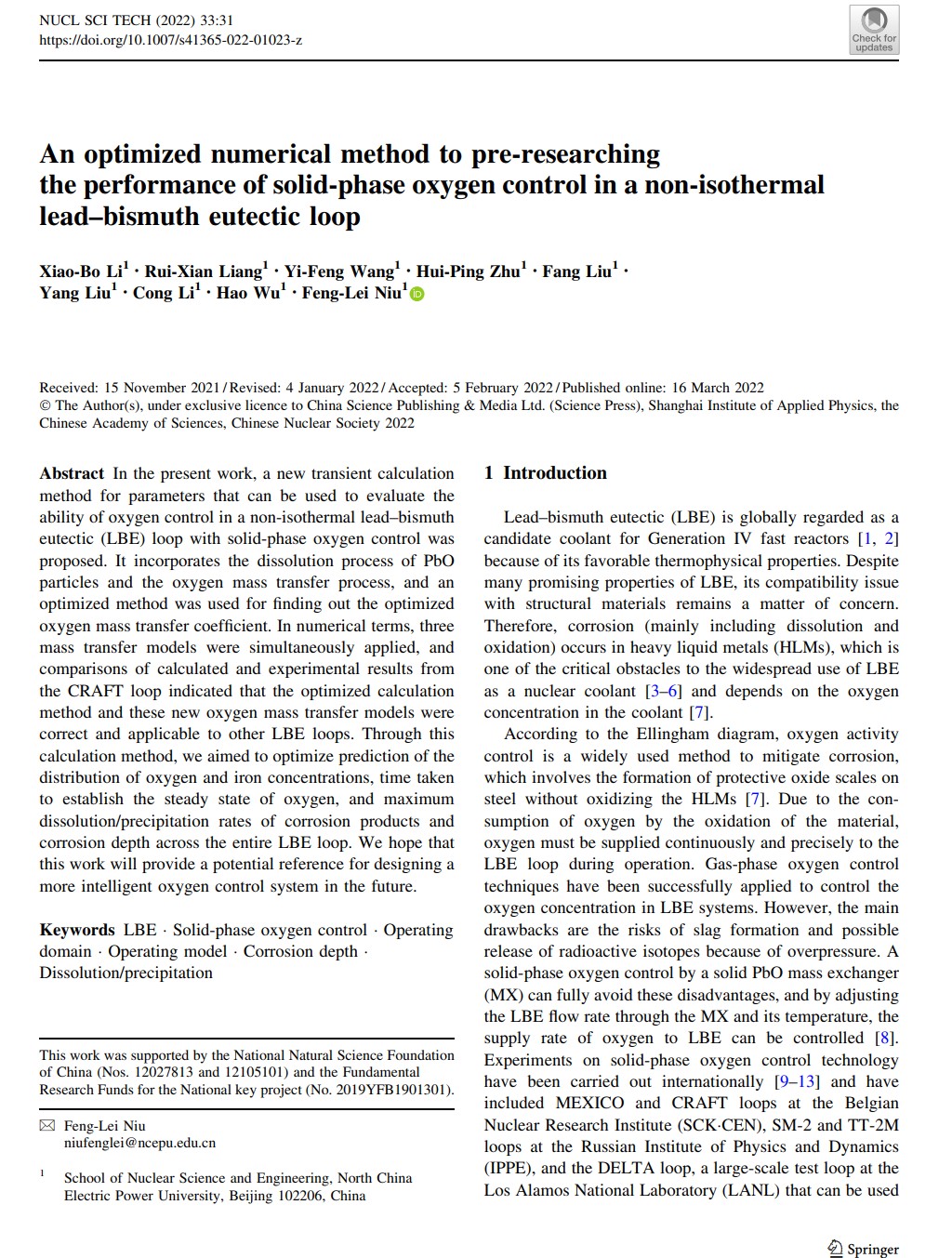In the present work, a new transient calculation method for parameters that can be used to evaluate the ability of oxygen control in a non-isothermal lead–bismuth eutectic (LBE) loop with solid-phase oxygen control was proposed. It incorporates the dissolution process of PbO particles and the oxygen mass transfer process, and an optimized method was used for finding out the optimized oxygen mass transfer coefficient. In numerical terms, three mass transfer models were simultaneously applied, and comparisons of calculated and experimental results from the CRAFT loop indicated that the optimized calculation method and these new oxygen mass transfer models were correct and applicable to other LBE loops. Through this calculation method, we aimed to optimize prediction of the distribution of oxygen and iron concentrations, time taken to establish the steady state of oxygen, and maximum dissolution/precipitation rates of corrosion products and corrosion depth across the entire LBE loop. We hope that this work will provide a potential reference for designing a more intelligent oxygen control system in the future.
